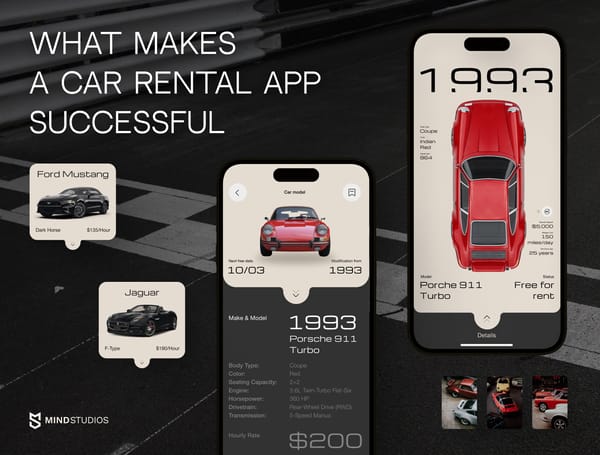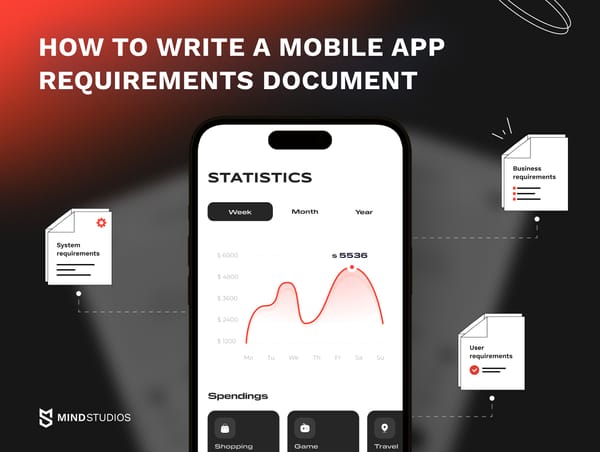With mental health awareness on the rise, the popularity of mindfulness is growing exponentially: the number of meditation practitioners has tripled over the last ten years. And researches predict $4.07 billion in worldwide revenue for the industry in 2022.
Meditation mobile app development is one of the focus industries for Mind Studios. From this post you will learn about cost to develop a meditation app, possible pitfalls when developing a meditation app, and ways to avoid them.
How did meditation apps come to be?
Each century, the ‘20s are a whirlwind of a time, with both good and bad things happening a lot. Stressful is one word to describe the twenties of our century as well. And that’s just added stress on top of the baseline stress that's become natural in our already fast-paced lives. No wonder the practice of meditation has become so popular.
Meditation — and mindfulness as one of the meditation types — is a relatively easy practice to master, yet it’s insanely beneficial and has no side effects whatsoever — a combination that has made it a huge trend. With no harm possible, meditation is becoming the go-to solution for these trying and stressful times. This, consequently, leads us to the emergence of meditation apps.
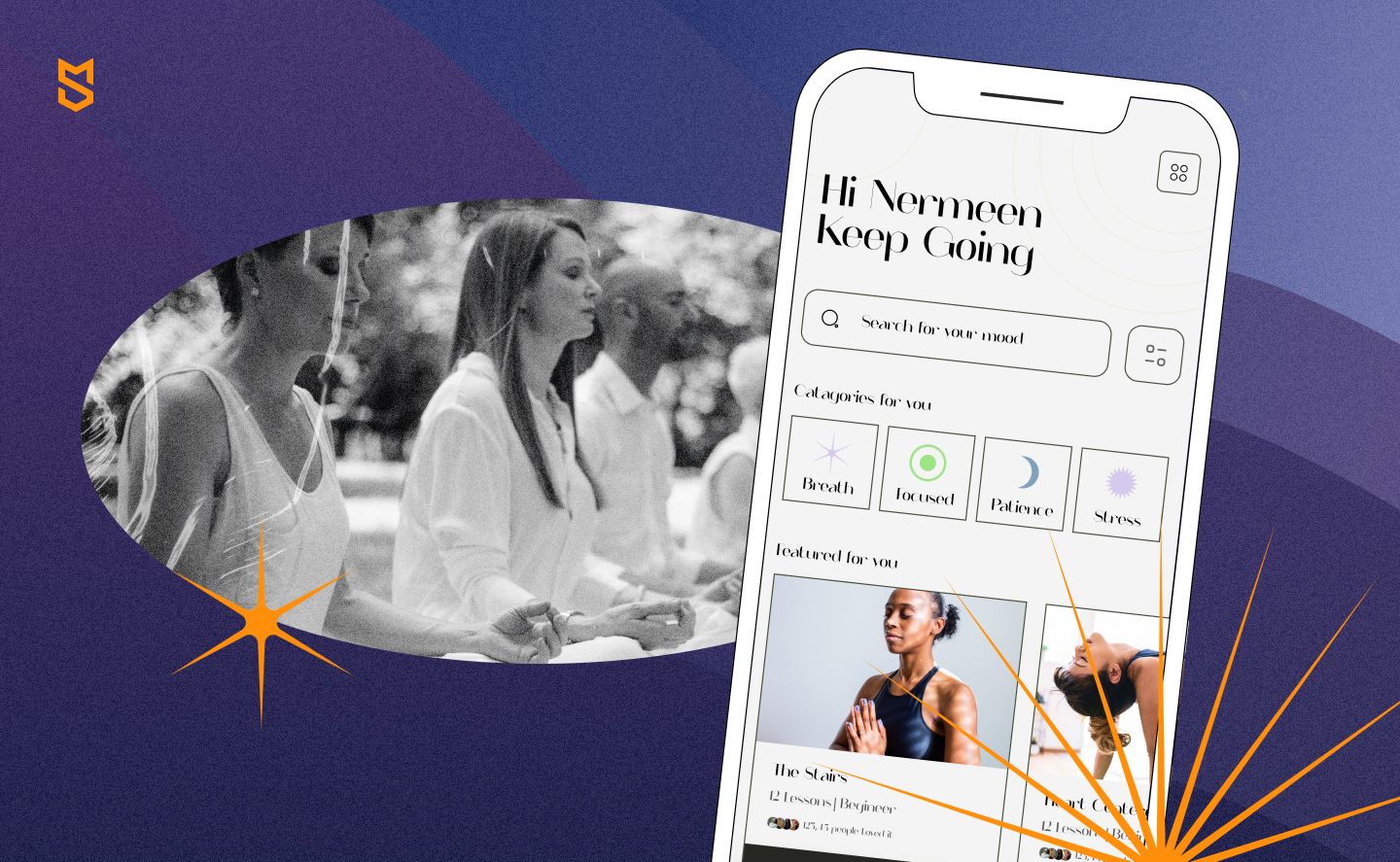
Meditation is supposed to be a reprieve from our addiction to smartphones and social networks. Put all the distractions away, close your eyes, and dive inside yourself. So how did it happen that meditation apps are a thing now?
Well, it’s the digital age. To rephrase a famous internet meme, if it exists, there’s an app for it.
Mobile apps bring guided meditation to practitioners’ homes, and getting services at home is something we've come to appreciate in the twenty-first century.
Between 2015 and 2020, over 2,500 meditation apps were launched in app stores. Seeing as there’s a huge selection of meditation apps on the market, anyone can find something they like.
And seeing as the revenue meditation apps earn is growing each year, now is the best time to join the fray and create your own meditation app.
Reasons to launch a meditation app
Users flock to meditation apps due to accessibility and flexibility of meditation sessions as well as because in most cases, an app is cheaper. Mobile apps made guided meditations more affordable. But what about the business side? What reasons do entrepreneurs have for meditation mobile app development?
Growing demand leads to high profitability
In the US, meditation is right after yoga in popularity these days. About 14% of the adult Americans and 7% of children practice meditation. As for global statistics, it is said that the number of meditation practitioners lies somewhere between 200 and 500 million people. And this number continues to grow.
People are also willing to pay for meditation apps.
Users have spent almost $120 million dollars on the Calm app alone in 2021, and over $86 million on Headspace. Sure, these are the market leaders. But it shows how high the demand for mediation apps is.
The popularity of meditation and mindfulness practices reached that stage where businesses offer their employees to practice at work. Meaning, there’s demand for corporate plans in meditation apps.
At the same time, meditation being a personal practice, there can be no one-size-fits-all solution, meaning there’s always a place for another player on the market.
Meditation apps are highly scalable
Meditation is a wellness practice and it goes well with many other practices our bodies benefit from. This means that when you create your own meditation app, you can scale it in multiple directions to appease your users.
The most straightforward way to scale is combining meditation with yoga. By adding video lessons on yoga, you can enrich your users’ practice. You don’t necessarily need to hire yoga teachers for that: some apps offer yoga lessons through drawings and animation.
But there are more options:
- Healthy eating recommendations
- Dieting
- Habit trackers
- Relaxation music
- Sleep facilitating practices
- Meditation-aided workouts
These are just options off the top of this writer’s head. Through brainstorming and cooperation with your team, you’ll surely find more to offer your meditation app users. And let’s not forget that there’s more than one type of meditation you can offer in an app.
Types of meditation apps usually offer
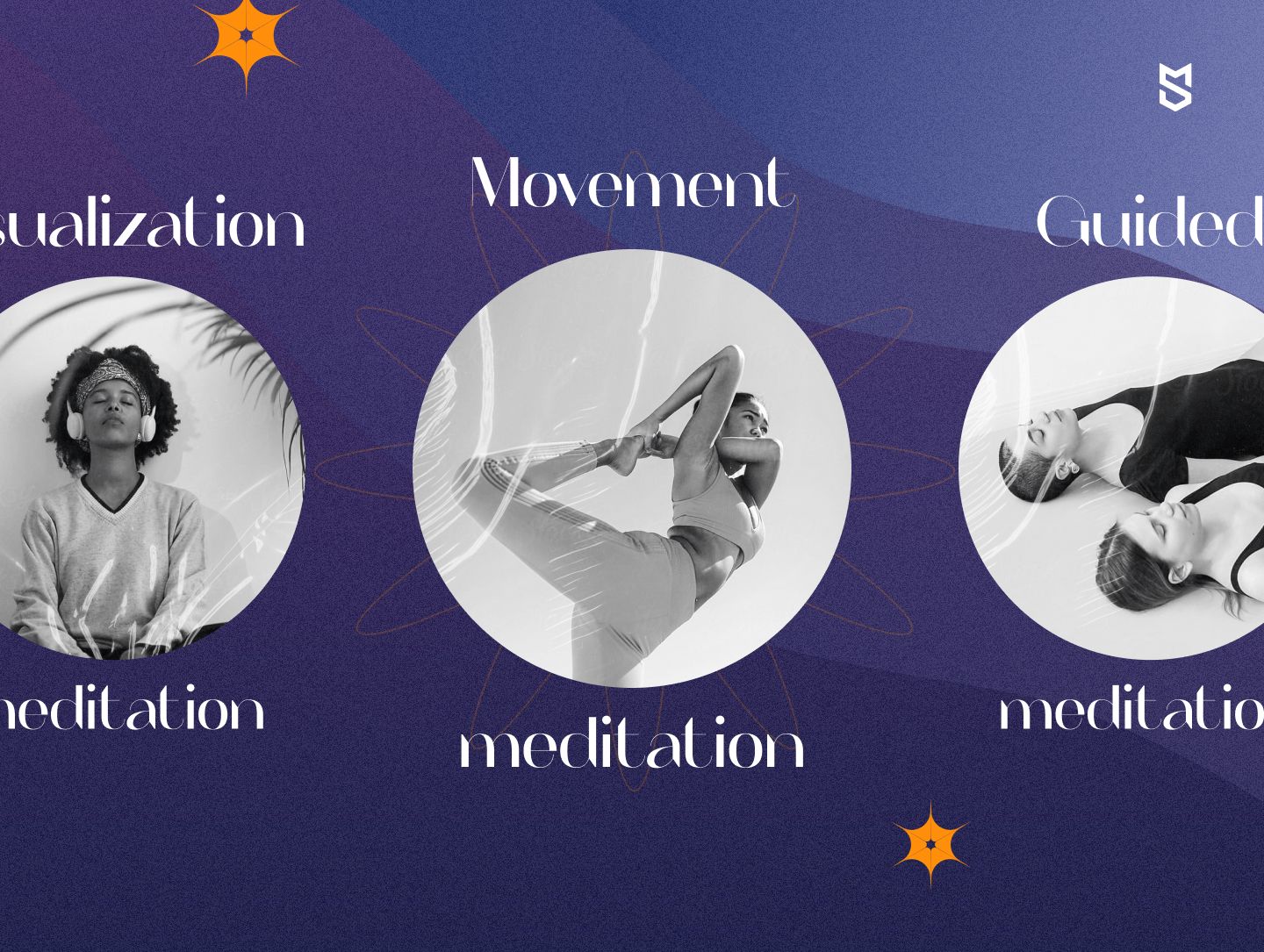
Meditation is a highly varied practice, which makes meditation and mindfulness apps so diverse. This potential diversity, in its turn, allows new apps to stand out — you can combine practices in multiple ways to better respond to your target audience’s needs.
Here, let us briefly cover several options for meditation mobile app development.
Guided or unguided meditation
As the name suggests, guided meditation is a practice where users listen to guidance from a teacher throughout their meditation sessions. In the case of apps, “teachers” record meditation sessions for users to guide them through.
Unguided meditation, on the other hand, doesn’t offer teacher’s help. Practitioners can choose to meditate in silence or they can use music or sounds of nature as the background. Your meditation app can offer the latter.
Both guided and unguided meditation can further be divided into other types of meditation.
Movement meditation
The notion that meditation is only done while sitting or lying down is a popular misconception. People can meditate while moving just as well. It’s not unusual to find practitioners meditating while walking, commuting, gardening, or cleaning the house, for example.
If you’re planning to create your own meditation app with guided meditation, consider adding tracks for movement meditation as well.
Visualization meditation
This meditation type teaches practitioners to focus on inner images instead of letting the thoughts and feelings pass by. It is a kind of focused meditation that helps people to calm down and ground themselves. Within an app, this type of meditation can be performed as a guided meditation with a teacher or with the help of sounds.
For example, one of the meditation apps we’ve created — Envol — offers 3D journeys, recorded sounds of footsteps through the forest or the sounds of breeze through young leaves. These sounds help users visualize the environment and stay there for the duration of their meditation.
Chanting meditation
Chanting meditation offers practitioners to focus and ground themselves by syncing their own chanting with the chanting of the coach. Chanting is practiced in many religions and can differ from one to another, but any of it can be offered in a meditation app.
These are just a few of the options for those who wonder how to create a mindfulness app that will be successful.
5 Steps to Create a Meditation App
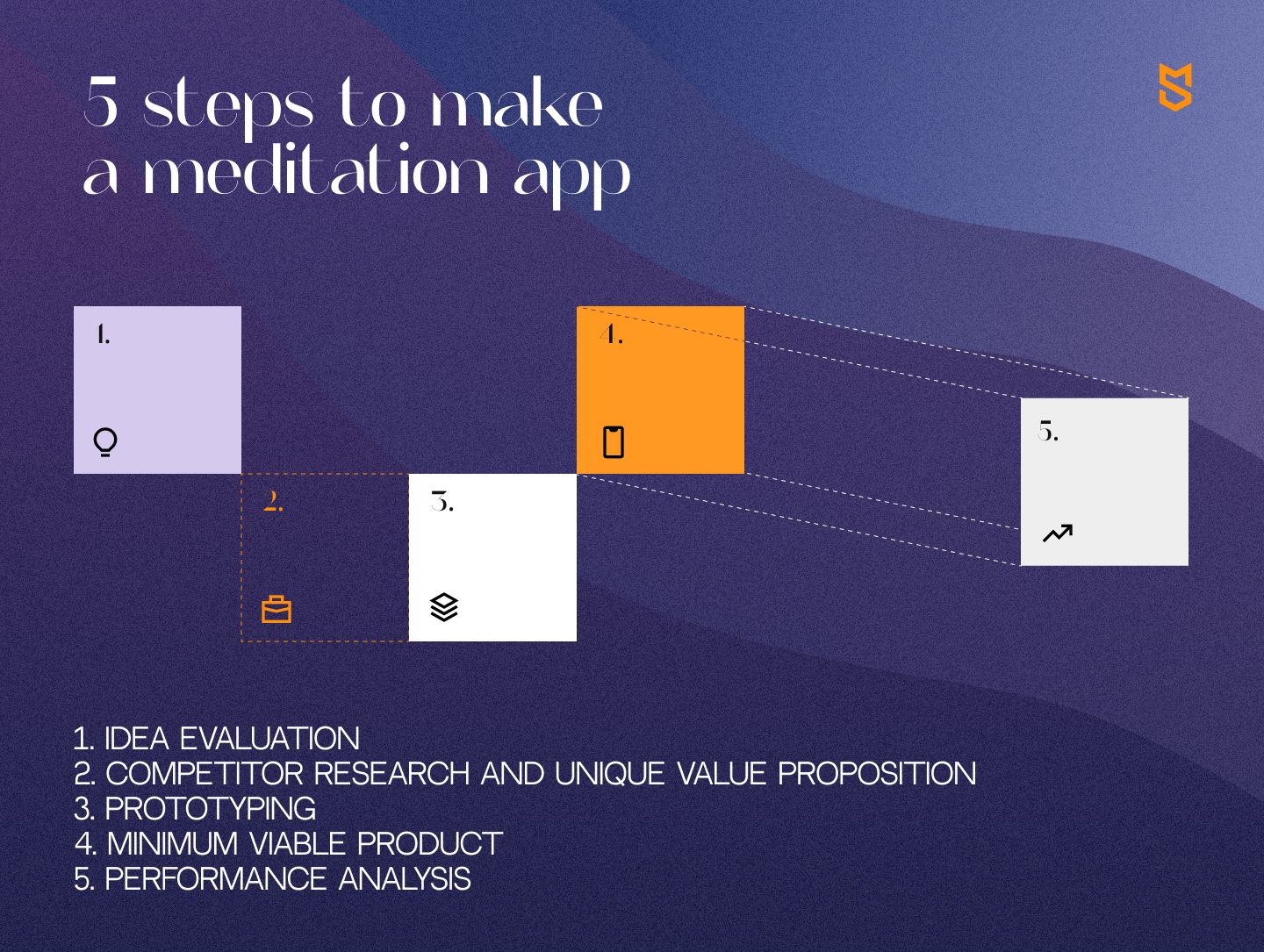
Before we begin estimating how much it costs to make a meditation application like Headspace, let’s go over the significant stages of development so you understand what you’ll be paying for.
Step 1: Idea evaluation
To make a successful app, you first need to know whether your idea is marketable — or rather how to make it marketable. To determine this, your software development company should offer to conduct research to evaluate your app idea.
When building a meditation app, the first step is to choose the type of meditation you'd like to guide your users in. It’s possible to offer a single kind of meditation or many so users can choose depending on their current needs.
Another thing to decide on is the level of expertise you expect your app’s users to have. Are you wondering how to make an app like Headspace for beginners who need guidance from step one? Or how to make an app like Calm for skilled practitioners — maybe your existing clients if you’re the owner of an offline practice? Your approach to development will differ depending on your goals, as will the idea evaluation process.
A typical idea validation process consists of these steps:
- Defining your target audience
- Locating the problem you wish to solve for your users
- Specifying how your app will solve the problem
- Identifying your competitors
- Deciding on your app’s unique value proposition
- Defining your app’s strengths and weaknesses
- Mapping out must-have and optional features
- Choosing a monetization model and metrics for performance monitoring
- Choosing the platform on which to launch your app
Based on the results of your idea evaluation, your development team will offer you the first cost estimate for developing your meditation app. It will most likely be a very approximate number, but at least you’ll know what to expect in terms of the necessary investment as well as the rough time frame for development.
Step 2: Competitor research and unique value proposition
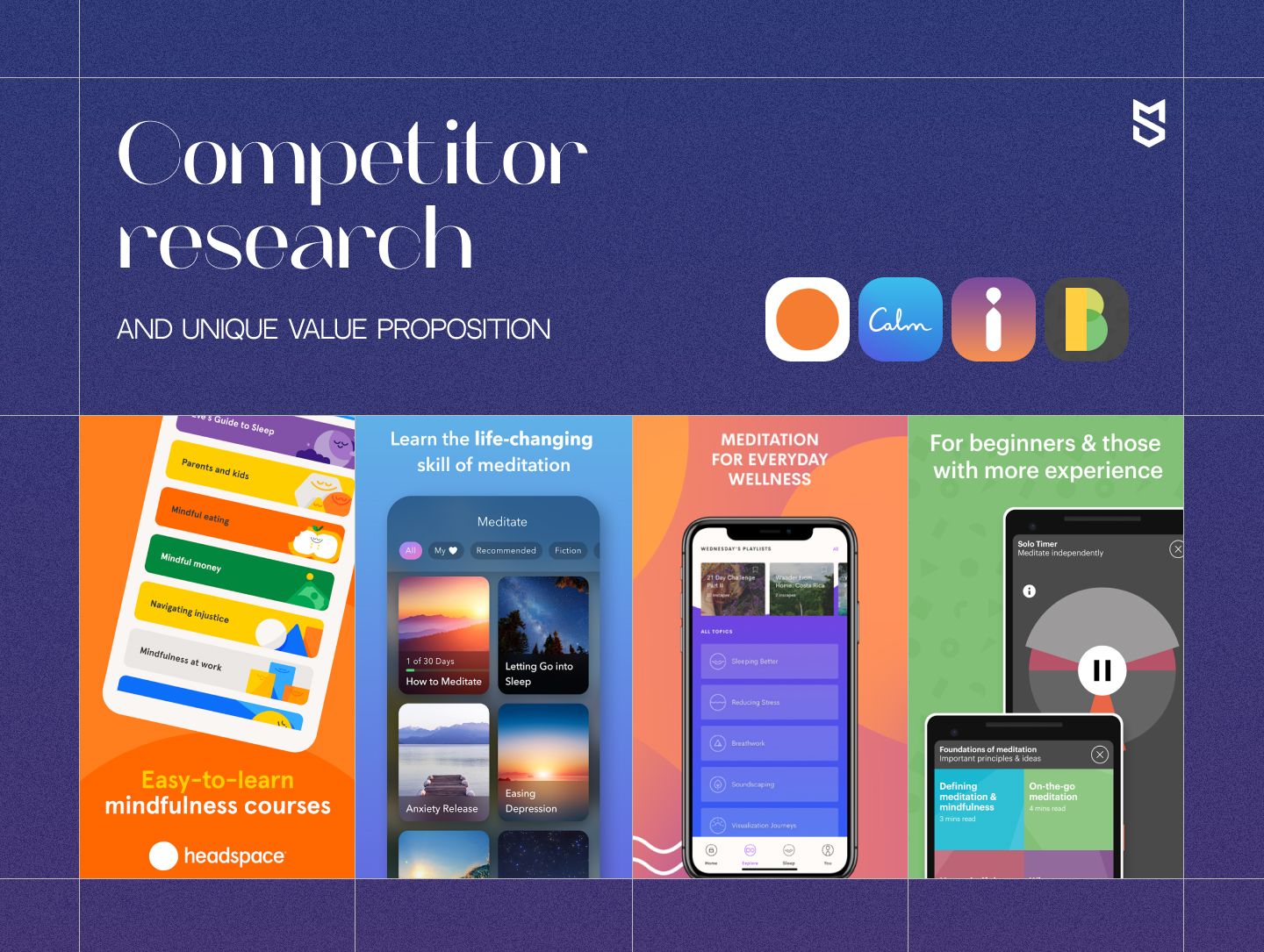
Any market has competition, and it won’t do to disregard existing relaxation and mindfulness apps as you create your own. To make your product successful, you need to know what you’re up against. Knowing market leaders will help you find a unique value proposition for your product to stand out.
For example, Headspace has a solid beginner’s course of guided meditation. Besides that, there’s a selection of meditations for just about anything: sleep, anxiety, stress, personal growth — you name it, Headspace has it. The app even offers meditation-aided workout sessions with professional trainers.
Headspace’s main competitor Calm is the app of choice for many people who struggle with sleep and anxiety, but it also offers a variety of guided meditations for achieving other goals. Calm has two key features:
- A wide selection of music for meditation and mindfulness for those who aren’t too fond of narration in guided meditations
- Sleep stories narrated by actors, professional voice-over artists, and writers
Compared to Headspace, Calm is less structured and is more often chosen by users with some experience in meditation.
There are, of course, others.
Like Inscape, an app from a well-known meditation studio in New York City. This app stands out from the crowd with its creative playlist naming: 3 Minutes to Rest, Tinder Troubles, Return to Peace, Urban Meditations, etc. Additionally, if you’re in NYC, you can purchase oils, candles, and other goods related to mindfulness from the Inscape shop with Postmates delivery.
Another popular app Buddhify also offers a selection of wellness meditations, but its biggest selling point is the short meditation sessions you can do whenever and wherever: while walking or commuting, during a coffee break, or even while hanging out with friends.
As you can see, while the core of most meditation apps is the same, there’s plenty of room to find a unique approach. Whether you focus on visuals, music, or a novel way to offer your meditations, you can let your creativity roam free and come up with something your customers will love.
Step 3: Prototyping
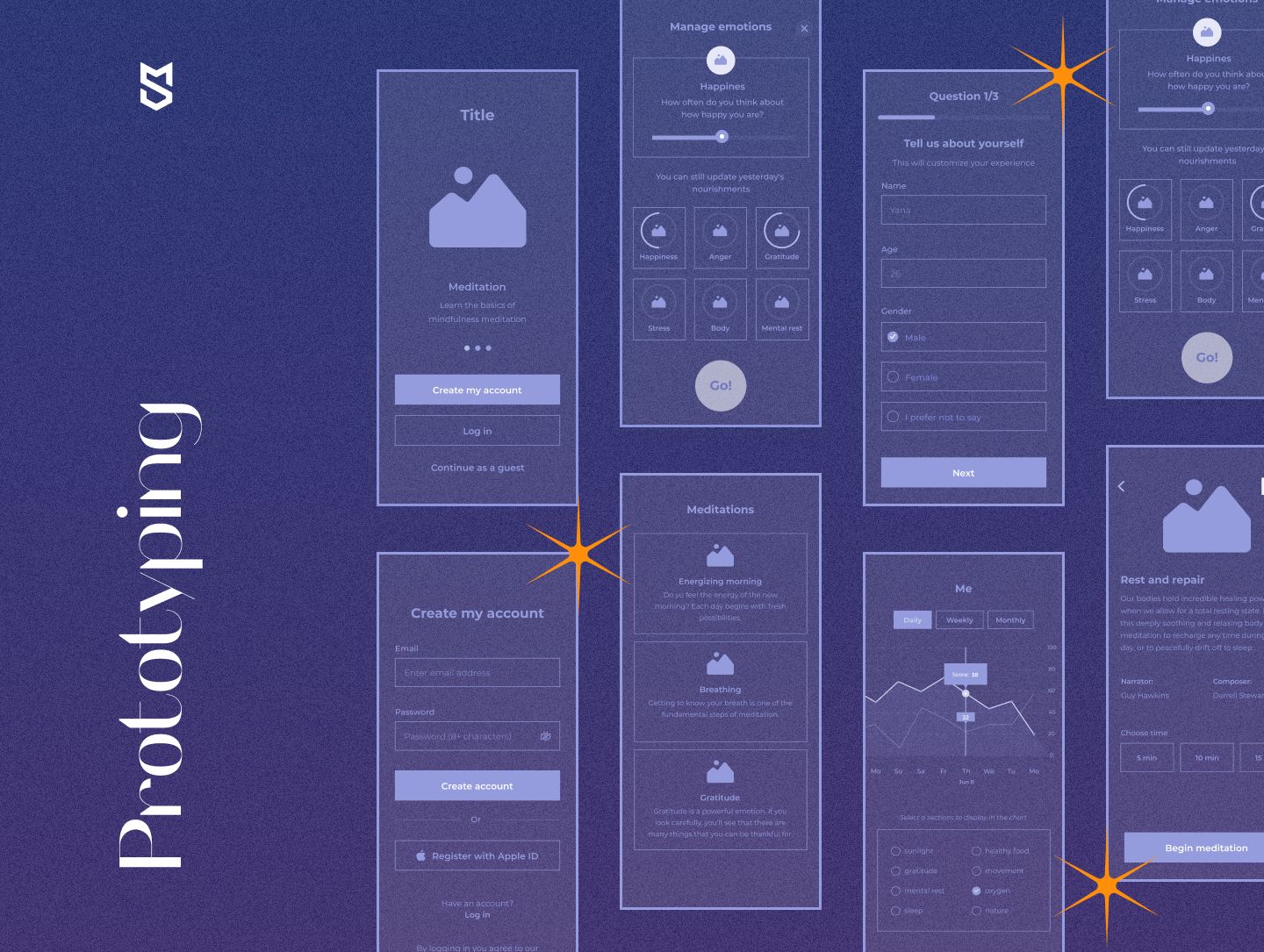
In the software development process, there are three levels of prototypes:
- Low-fidelity prototypes
- Medium-fidelity prototypes
- High-fidelity prototypes
In terms of software development, fidelity is the level of detail a prototype has. A low-fidelity prototype — alternatively called a navigation concept — is basically a sketch of an application. Though nowadays it’s usually digital, this sketch can be hand-drawn on paper or a drawing board. A low-fidelity prototype is just a sequence of screens made to visualize the scope of the app and to verify that the development team sees the product the same way the client does.
Medium-fidelity prototypes have more detail than low-fidelity prototypes but are still more mock-ups than functional apps. They no longer look like a rough sketch but rarely have a proper user interface design. Medium-fidelity prototypes are used to test the app’s navigation with a test group.
High-fidelity prototypes have a more detailed design — both in terms of the UI and UX — but they aren’t fully functional yet. They’re also often black-and-white. Developers can make high-fidelity prototypes as bots where users can interact with a mock-up of your app and offer feedback on what looks good or bad.
These three prototypes are created one after the other, with the feedback for each used in improving the next. After your development company gets feedback from a high-fidelity prototype, they can re-evaluate and offer you a more precise estimate of the cost to design and develop your app.
Step 4: Minimum viable product
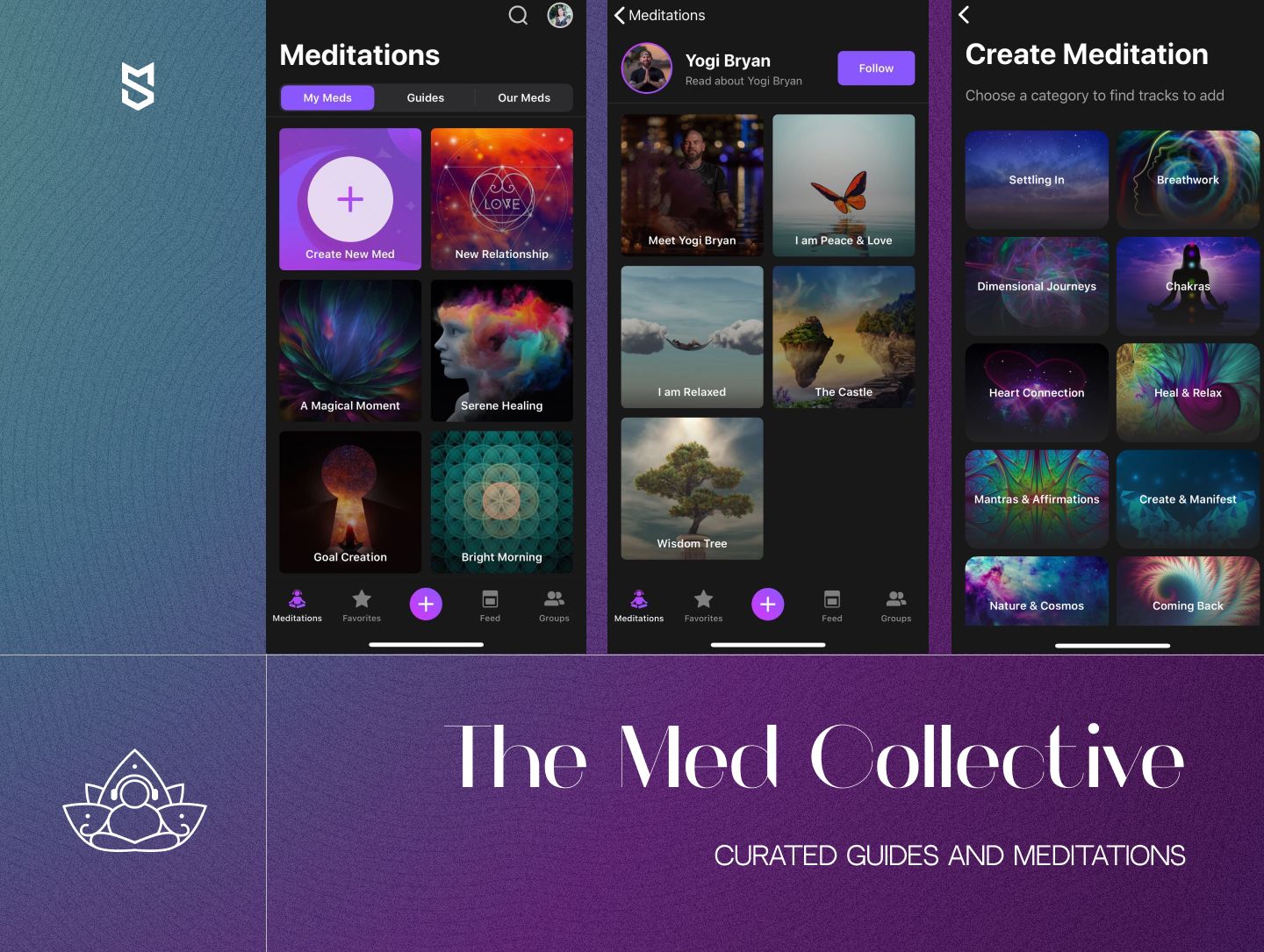
To save on the cost to develop a meditation app, we recommended first launching a minimum viable product (MVP). An MVP is a version of your app with just the minimum of features. It’s somewhat similar to what in game development is called a beta version: It’s launched mainly to test the app’s reception by the target audience before you throw all your money into full development.
At Mind Studios, we can also offer to launch an MLP — a minimum lovable product — instead of an MVP. They’re similar in that both are works-in-progress launched with minimum features to test the waters, but there are differences as well.
While an MVP focuses on offering basic functionality with very little attention going into UI/UX design, an MLP is a version of a product aimed at triggering an emotional response from users by having a bit more thorough of a UI and UX design in addition to a unique value proposition.
A project manager can help you choose the better option for your company depending on the market situation and your idea’s peculiarities.
Step 5: Performance analysis
To successfully launch a full version of your meditation app, it’s important to analyze its performance as an MVP.
The main reason we always recommend our clients to start with an MVP is because it saves the costs and lets us test the idea and its implementation on real users. Launching an MVP can show if the app has any UX issues that went unaccounted for. It also helps app owners evaluate their marketing campaigns by using unit economics and choose channels for the full launch that will perform best.
Armed with analysis results, the development team can fine-tune the road maps for development, prioritize future features better, and overall assess where the app should proceed to become a brand everyone hears about.
Key meditation app features to include
What features of meditation apps are essential for success and how can you approach developing them?
Sign-up
Users are now used to having an option to sign up via social networks (Facebook, Twitter, Google) in addition to email. Signing up with a social media account is faster and there’s no need to remember one more password.
User profiles
Users need a place to quickly access important information about their subscription plans, the history of their latest meditations, progress, etc.
If you’re using some kind of gamification elements — leaderboards, active user bonuses — they also need to be easily accessible.
Player
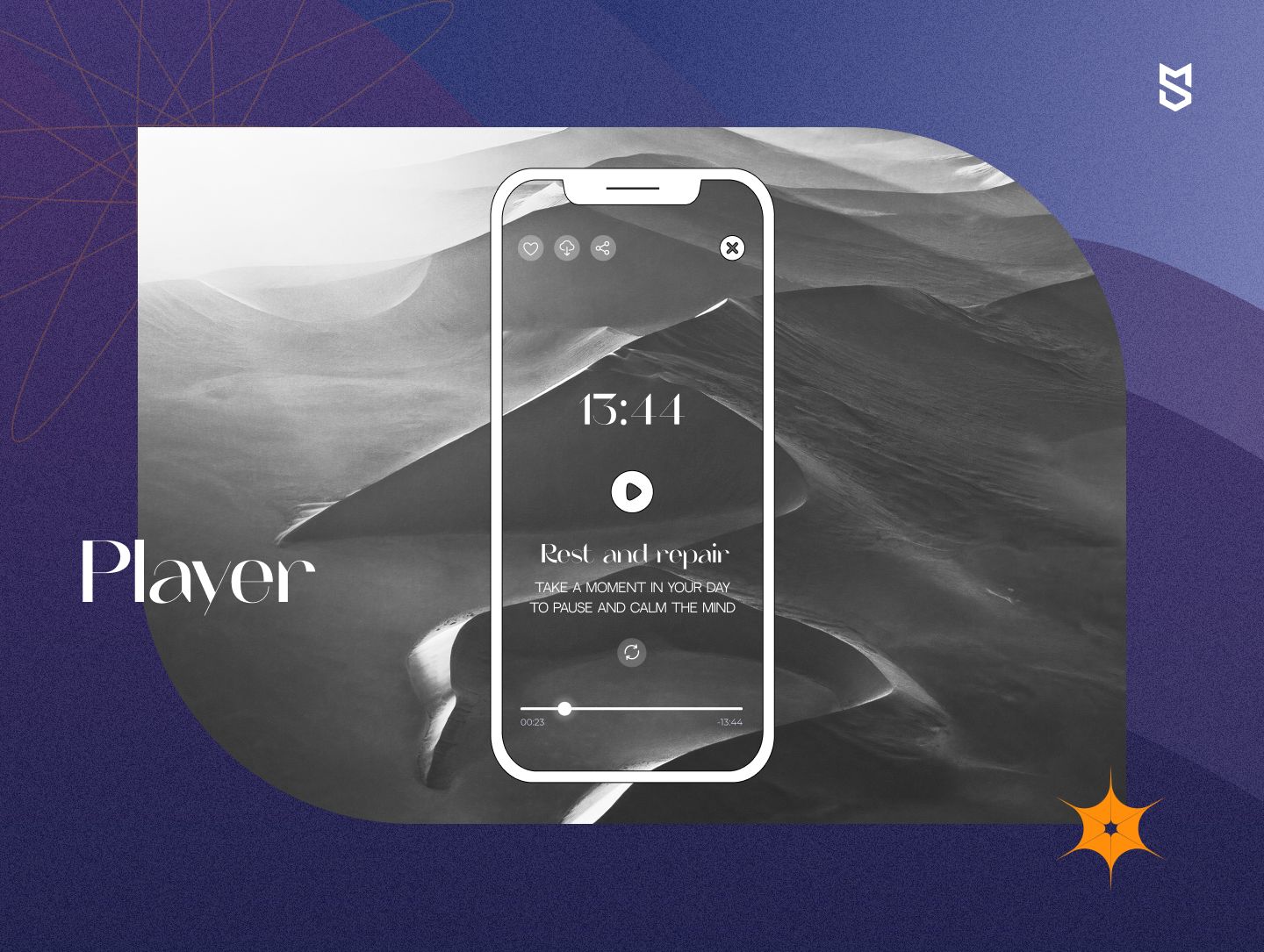
Meditation — in real life and in apps — is usually either guided by a trainer’s voice or supported by other kinds of sound, so you’ll need media playback functionality at the core of your app. It might be beneficial to offer both streaming and downloading the audio for meditations while offline.
If you want your app to offer yoga or workout sessions, you’ll need video playback functionality in addition to audio. Such a feature will impact your meditation app development cost but it can also make your app stand out.
To avoid pirating your content, you can implement encryption so that users can only play the audio files from your app.
Hint: If your meditations are in the form of audio podcasts, you could add images, animations, or non-distracting videos for when the sound is on since not everyone meditates with their eyes closed. This could help create an emotional connection of sorts with your app’s users.
Content library
Meditation recordings — be that audio only or video as well — should be of high quality and recorded with professional equipment. Low-quality content will deter users from your product.
The library should be searchable and structured. Most meditation apps catalog meditations by purpose: for sleep, for anxiety, guided meditations for beginners, and so on. It’s an easy and intuitive way to list recordings. However, you can also create your own listings or playlists — the important thing is that you explain your system to users.
Favorite tracks
For users, some tracks will work better than others. This is only natural with a practice as personal as meditation. Allow users to bookmark/favorite/like tracks to be able to come back to them when the need arises.
Offline playback
Users often appreciate the option to download tracks and play them whenever, especially if you’re building an app for short meditation sessions during a commute.
Recommendations
For a tailored and personalized experience, consider implementing machine learning when you create a meditation app like Headspace or Calm. With the help of artificial intelligence, your app can analyze the meditations each user listens to and recommend similar ones — by theme, purpose, or even narrator.
Gamification
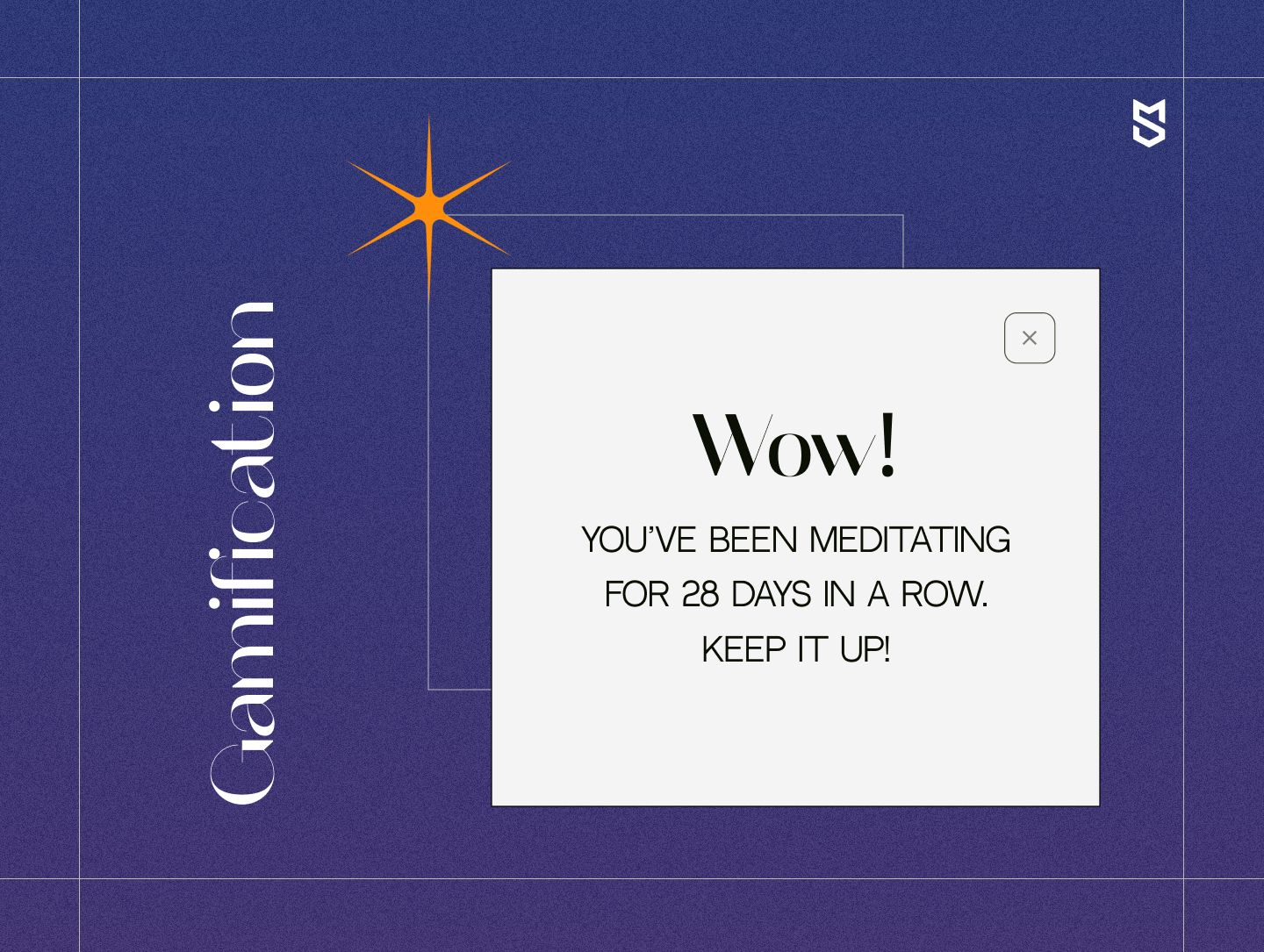
Gamification is one of the best ways to keep users engaged in an app. Everyone is more or less competitive — some people like to compete with others, while some will come back to keep a personal streak going. You can run an A/B test on your target audience to learn what gamification model they prefer. Or you can implement several to cover the needs of more users.
Trackers and statistics
If you plan to build a meditation app with the focus on, say, weight loss, battling depression, or eating disorders, you’ll need trackers. Make your app ask users about their moods, or let them track their weight right in the app if that’s related to their meditation goals. Trackers and statistics help users see patterns and work on achieving their goals.
Push notifications
More often than not, people need reminders when they start forming new habits, and meditation is not an exception. Push notifications are the go-to solution for this. They’re way less intrusive than alarms yet they get noticed right away.
Since meditation is a personal habit, the best solution is to make customizable reminders. If a person meditates before going to sleep, they’ll set a reminder for, say, 10 pm; if they prefer morning meditation, they can set reminders for the time they usually wake up. And short midday sessions can have random notifications, but a user needs to be able to opt out of those.
Settings
Users must be able to tweak notification settings, change their emails and passwords, and deactivate their accounts.
Support
If you have a meditation studio with several trainers willing to offer consultations and real-time guidance, think about integrating chat functionality. If you don’t have live people available for chatting, a chatbot with a selection of responses is another good option. When people are new to your app and/or to meditation in general, they’ll be grateful for this kind of assistance.
Wearables integration
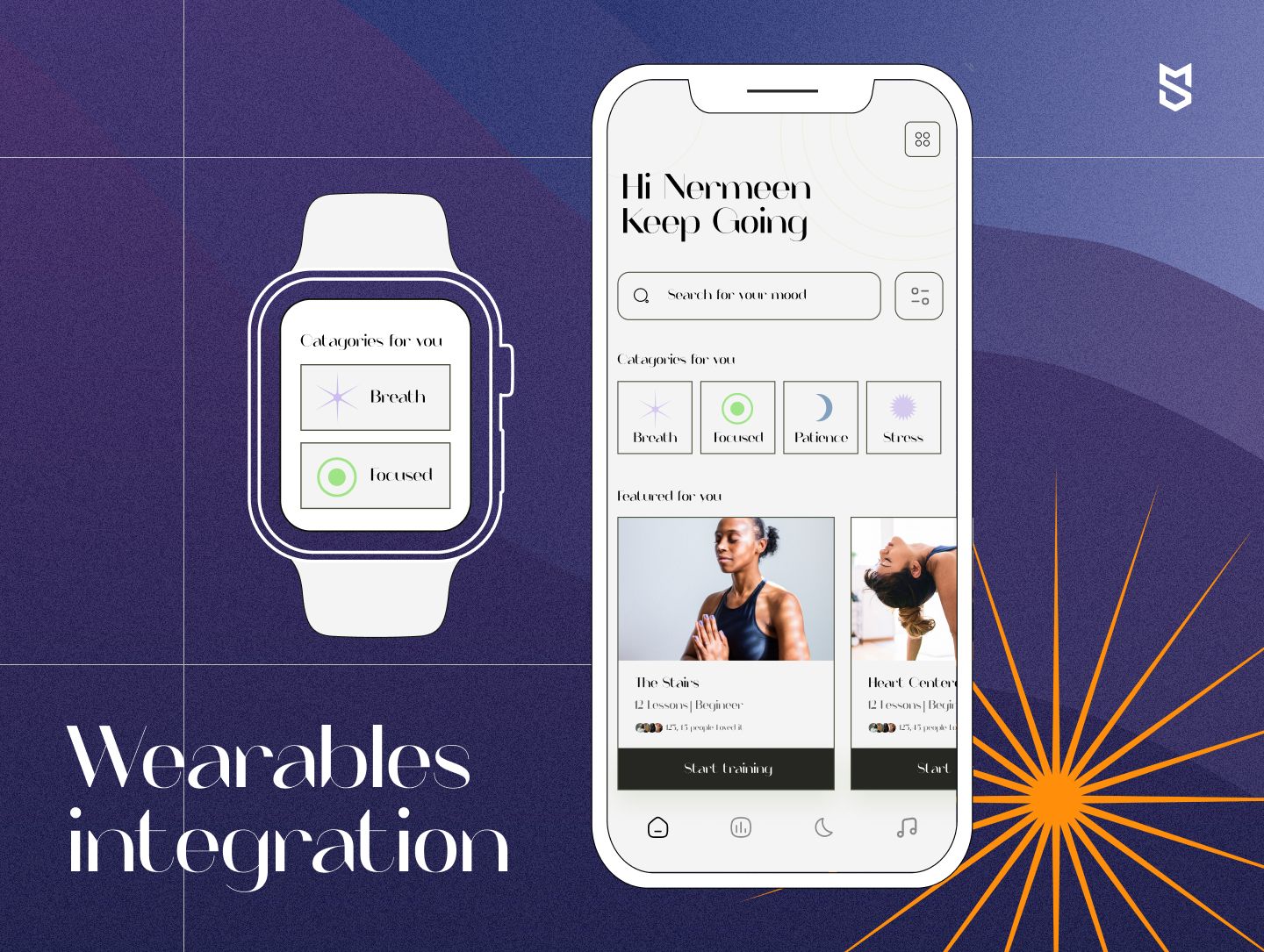
More and more applications today have an option to send notifications to smartwatches and fitness trackers. When it comes to meditation and mindfulness, you can go further and allow users to start breathing exercises without taking out their smartphones.
Payments
To further develop, update, and maintain your app, you’ll need to get revenue. So you’ll have to choose a monetization model. If you opt for subscription or in-app purchase option, you’ll need in-app payment functionality.
Keep in mind that app stores withhold a fee for in-app purchases, at the time of writing this article both Google Play and Apple App Store took 30% fees. You can avoid those if you build a fully functional web-app for meditations in addition to a mobile app, but we still recommend you keep in mind the fee when you set your app’s prices.
Admin panel
An admin panel will allow you to add new meditations, edit them, rearrange categories, hold events, and monitor and control the app in general.
Users won’t have access to this side of your app; only the app owner and designated employees will be able to change things via the admin panel. That’s why admin panes usually lack fancy design and are web-based — to make them faster and cheaper to build.
Meditation mobile app tech stack
The meditation app tech stack for an app we’ve recently launched looks like this:
| iOS | SwiftUI |
| Android | Kotlin |
| Backend | Ruby, PostgreSQL, Firebase, APNs, Sidekiq |
| Frontend | ghost |
| Payment functionality | Stripe, PayPal |
Meditation app design best practices
User interface practices
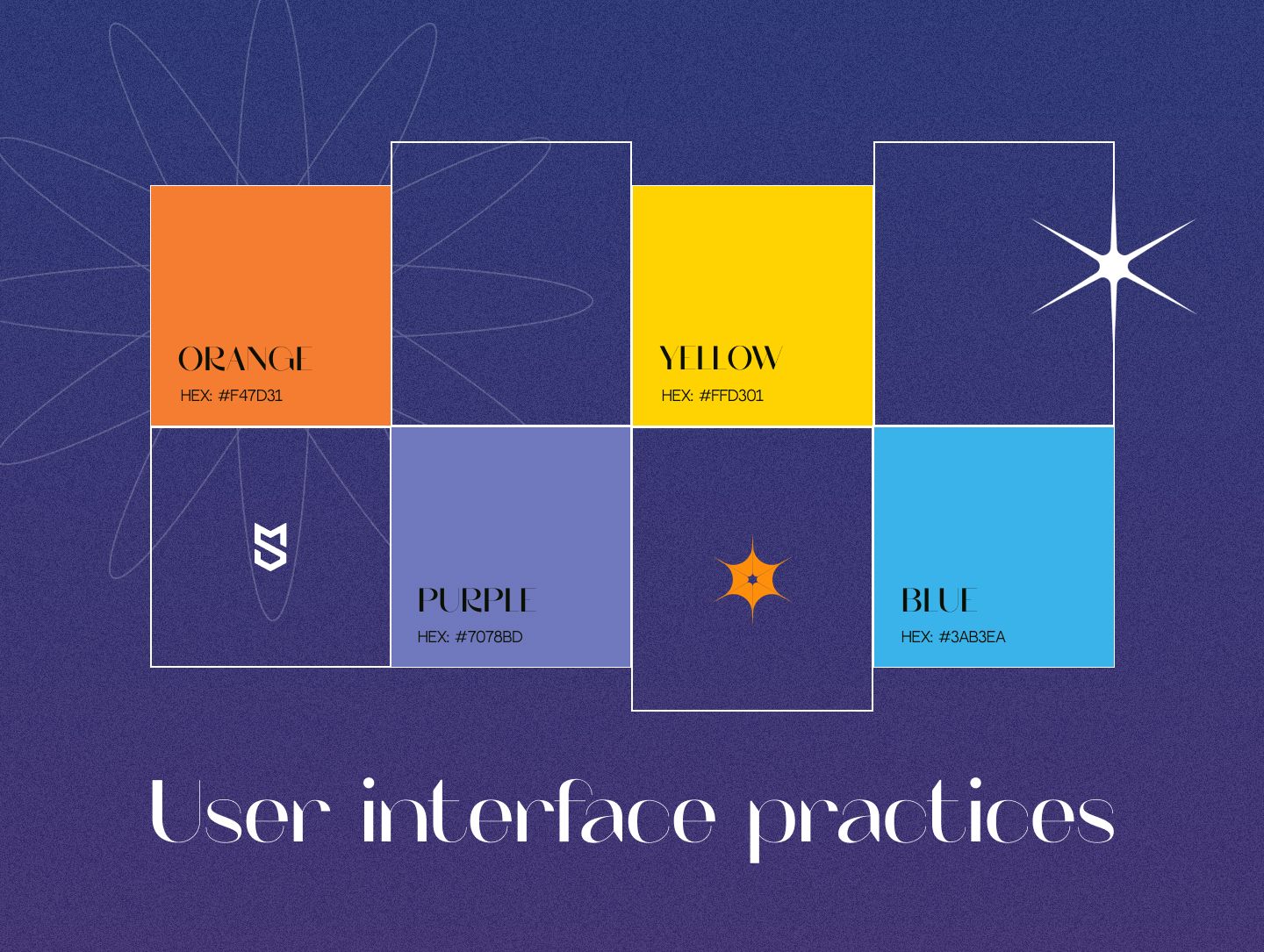
People use meditation apps to relax and unwind, and since colors affect our perception of things and our mood, it’s important to use color theory when you create a meditation app.
Think about Headspace and its warm cartoonish interface. It looks welcoming, which is one of the things that makes Headspace great for those taking their first steps into meditation. Headspace is full of mild oranges, faded blues, greens, and yellows.
Calm, on the other hand, is all blue hues and natural images, and it’s really calming, as the name implies. Aggressive colors like red are rarely seen in mindfulness apps.
The colors we chose for Envol, our latest mindfulness app, are uplifting light blue and yellow with some purplish hues to motivate users to keep up with the practice of becoming healthier.
Your meditation app design can differ widely depending on what image you’d like to create in your users’ minds.
If you’re trying to make an app similar to Headspace, you’ll need to add an artist to your UI/UX team to draw cartoonish characters.
For a Calm-like experience, photos or abstract images will be good.
Cute animations are a great way to engage users. Think about using Motion UI, one of the biggest web development trends this year.
Overall, the meditation app industry makes for a very diverse space where creativity is blossoming. This isn’t surprising, since one of the things mindfulness helps with is unlocking your creativity.
User experience practices
Aside from the general recommendations for intuitiveness and simplicity, in the case of meditation apps, we recommend paying a bit of extra attention to user onboarding.
Onboarding is an essential part of the user experience in meditation apps, especially if you’re building your app for beginners. Many people approach meditation skeptically, and to make them stay with your app, you need to make onboarding engaging and appealing to the eye.
Tell a story, show a short video, and explain to your first-time users what meditation is and what you’re offering them with your app. Make it interesting — maybe even interactive — but easy to understand.
Headspace provides a good example of onboarding in a form that looks like Instagram Stories. It’s both cute and harnesses the latest trends.
Note: According to research by Vidyard, the optimal length of an explainer/introductory video is between 60 and 90 seconds, and demos should be no longer than five minutes for users to watch them till the end. So if you’re doing a video or a set of animations for onboarding, focus on touching the most important points in your app; you can explain every feature in detail later.
Localization
Meditation is a practice that’s popular all over the world and if you’re planning to launch globally, localization is a good way to win over users. This includes localization of your app’s interface as well as content localization, if possible.
How much does it cost to develop a meditation app like Headspace or Calm
We’ve been working with meditation app development for some time and we’ve got some approximate estimates for anyone interested.
Here are the things that go into the cost to build an app like Calm or Headspace:
- Work of the development team
- Cost of servers
- Maintenance and support
Your development team will consist of:
- Project manager
- UI/UX designer
- iOS and Android developers
- Backend developer
- QA engineer
According to our experience, to make a meditation mobile app like Calm or Headspace MVP will take a minimal development team about 3 to 4 months if everything goes according to plan. The time required can be affected by the complexity of features, the intricacy of the design, and the number of specialists involved. This timeframe includes both iOS and Android apps as well as back end — all sides of the app are developed simultaneously. Here’s a meditation app development breakdown:
| Stage | Time required | Cost, USD |
|---|---|---|
| Discovery / Idea validation | 80-100 h | 3600-4500 |
| Competitor research | 32-40 h | 1440-1800 |
| Prototyping and UI/UX design | 160-200 h | 7200-9000 |
| Developing an MVP | 1200-1689 h | 54,000-76,000 |
| Testing and Project Management | 230-320 h | 10,350-14,400 |
The totals for meditation app MVP development by platforms will look similar to this:
| iOS app | Android app | Server-side app |
|---|---|---|
| 456–600 hours | 400–558 hours | 349–531 hours |
You’ll need a backend for any app but you can choose to build your meditation app for one platform first and add a second later if you need.
So how much does it cost to build a meditation app?
Depending on where your developers are from, their hourly rate will differ: North America has the highest rates and India the lowest, with Eastern Europe in the middle.
On average, the cost to develop a meditation app like Calm or Headspace will be about $76,590 for an iOS app, Android app, and backend combined.
If you decide to skip or postpone either the iOS or Android app, the cost will be lower. Extra features using complex technologies (like AI) will increase the cost.
Challenges of meditation application development
Here are some difficulties you might encounter as you create your own meditation app.
Uninterrupted playback
One of the challenges in Calm / Headspace app clone development is ensuring that the audio files with meditation narration or music play smoothly. Meditation is the practice where disruption is the main detrimental factor so audio needs to be played without so much as a hiccup.
At the same time, said audio needs to be of at least decent quality, which, in the case of long meditation narrations, can mean big files that require a lot of bandwidth.
At Mind Studios, we’ve encountered this issue with one of our meditation apps, and we’ve dealt with it with the help of AWS-based custom streaming. The system we used creates multiple copies of each file in different sound quality and the user streams the file that corresponds best to their connection quality.
Maintaining simplicity of use
The thing about apps that offer content is that said content needs to be expanded on a fairly regular basis so that your users don’t get bored. New meditations, music, sounds, and any other content your mindfulness app hosts will need regular additions.
And while regular content updates are a challenge on their own, this issue also gives way to another problem: the ease of use.
When you discuss with your team how to start a meditation app, you need to remember to ask yourself and your UI/UX designers this question:
How do we make the content expansion while keeping the app uncluttered and intuitive?
Depending on the kind of content you offer, and its diversity, you might introduce sophisticated categorization, advanced search options, or come up with another way to make things simpler. The important thing is to keep this possible pitfall in mind while designing your meditation app.
Mind Studios experience
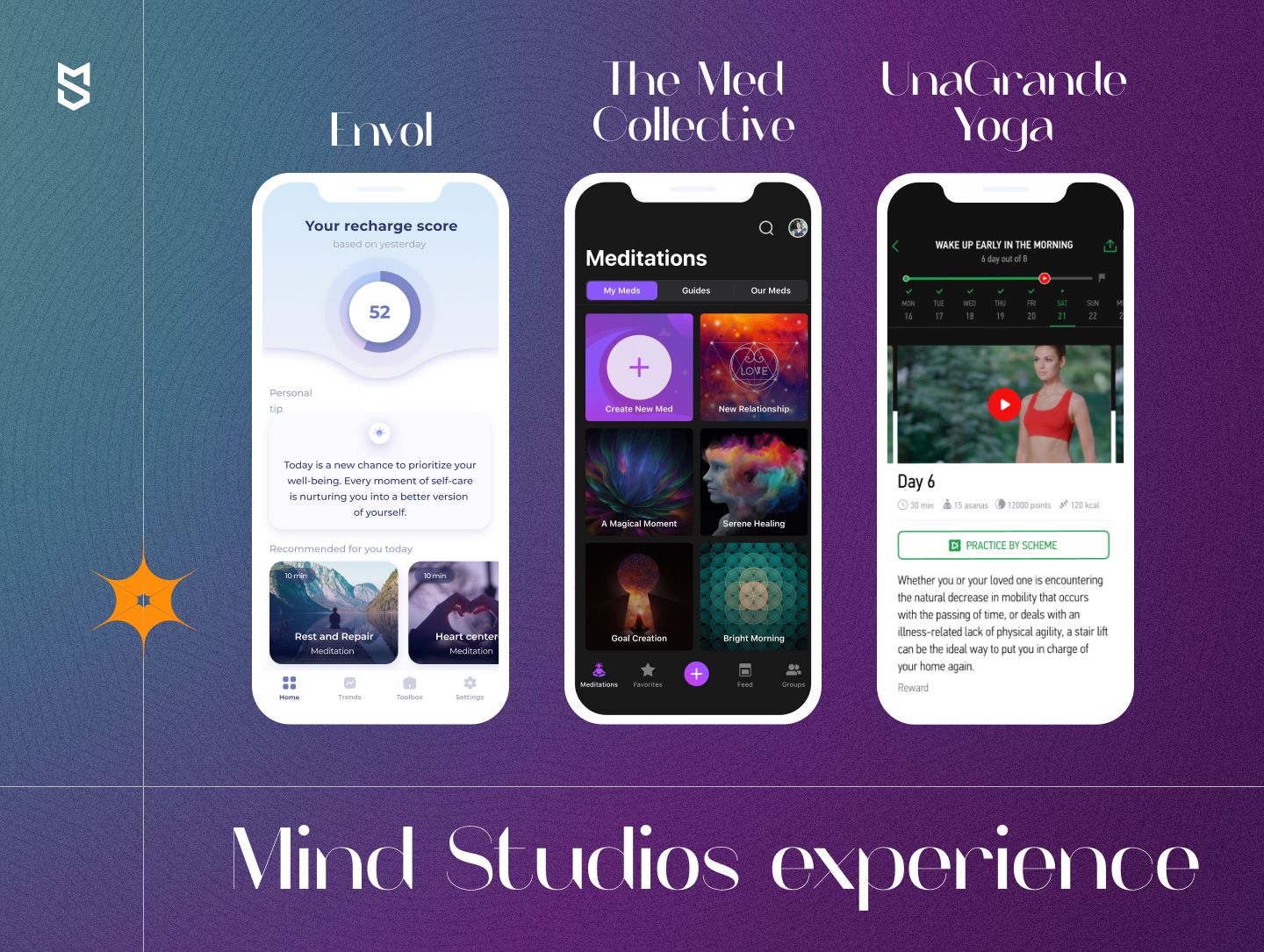
At Mind Studios, we had our fair share of developing meditation and mindfulness apps throughout the years. Our latest is Envol, a mobile healing assistance tool that combines a number of practices including meditation. The app has over 8,000 active users these days.
We’ve also developed a 5-star solution where multiple meditation coaches offer users their sessions. Finally, we have experience in yoga app development, our app has 4.9 stars on App Store.
All in all, Mind Studios came to see meditation app development as one of our industries in focus, practically making us a meditation app development company. We follow the industry very closely and build apps that find their niche and are successful.
Conclusion
The meditation app market has been thriving for the last decade, but in 2020, it was additionally fueled by pandemic-caused isolation and stress among the global population.
More and more people are discovering the benefits of meditation every day. This means the market will only grow. Rough estimates by Statista promise the industry to be worth $2 billion by 2022 in the US alone.
Although Headspace and Calm pretty much dominate the US market today, users still seek alternatives. Besides, there’s the international market as well, which is less dominated by Headspace and Calm as they don’t offer support for many languages.
If you’re thinking about how to create a mindfulness app and you need guidance — be it a consultation, cost estimate, or development services — Mind Studios will gladly lend you a hand.

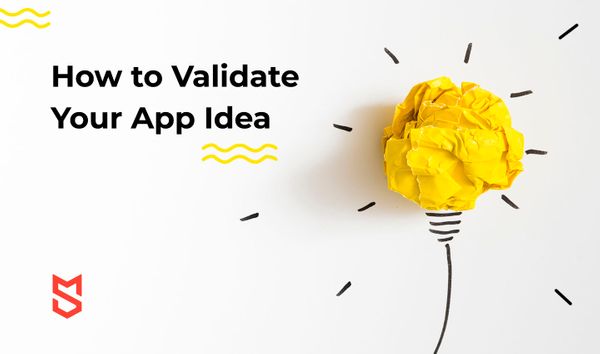
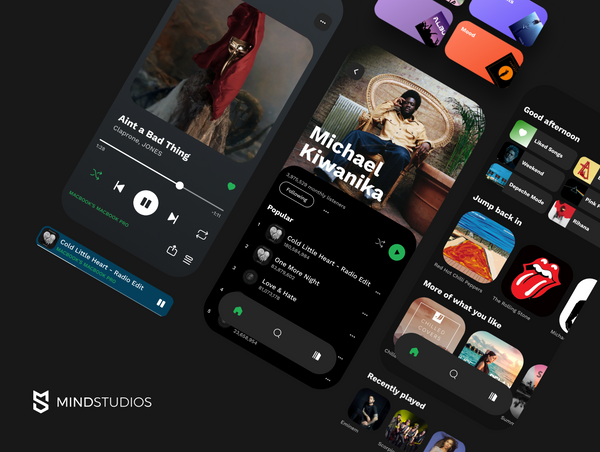
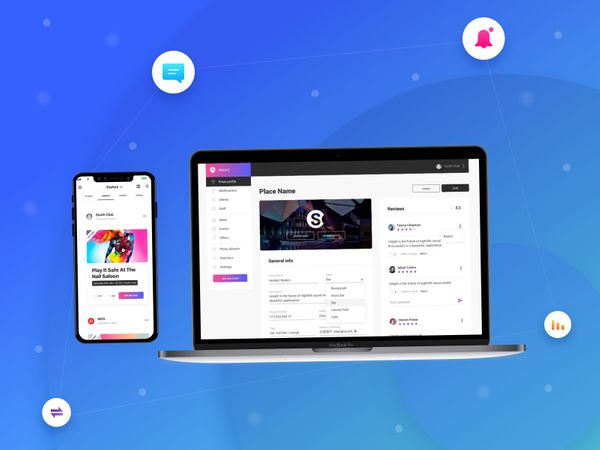

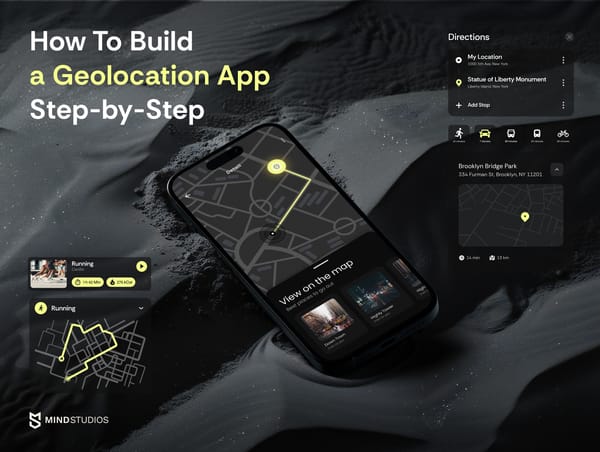
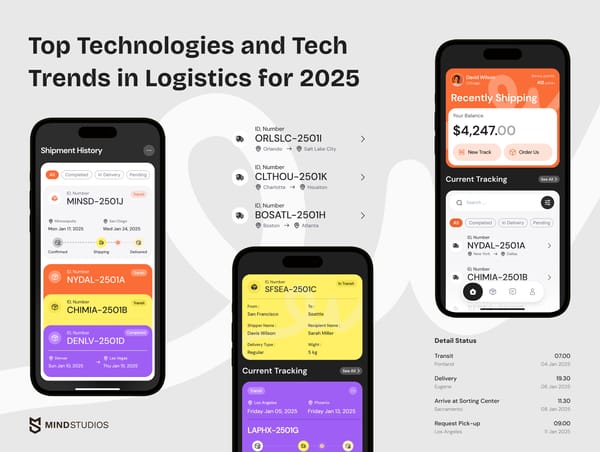
![How to Create an On-Demand Medicine Delivery App [Expert Guide]](https://themindstudios.com/blog/content/images/size/w600/2025/03/IMG-1-Cover-6.jpg)
